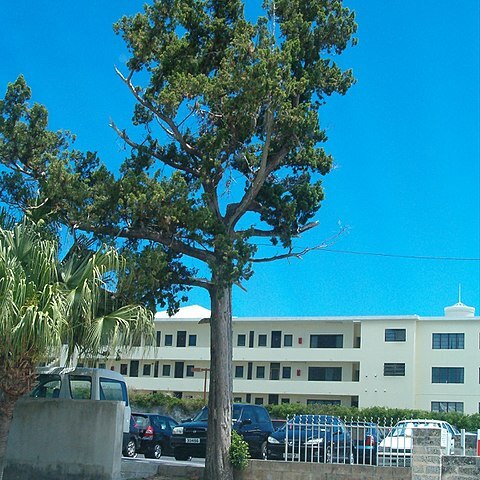A tree. It grows 15 m high. The trunk is sturdy. The bark is dark red. The branches are divided and the small branches are 4 sided. The leaves are scale like and overlapping. They are in ranks of 4. The seed cones are an irregular rounded shape or pear shape. They are 4-6 mm long by 5-8 mm wide.


